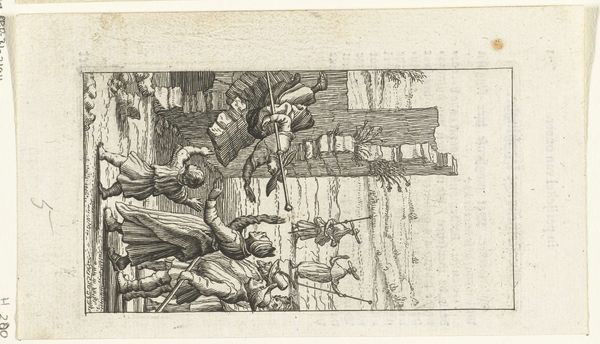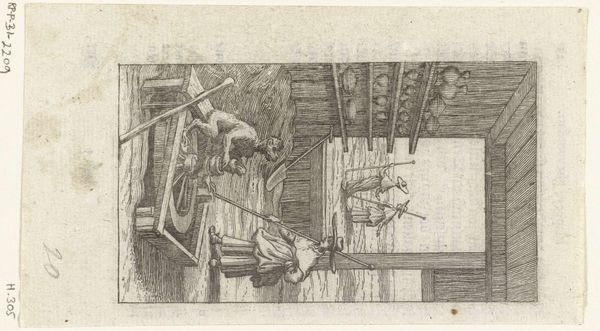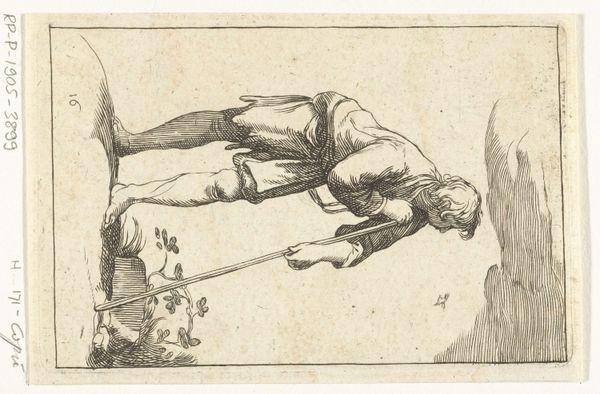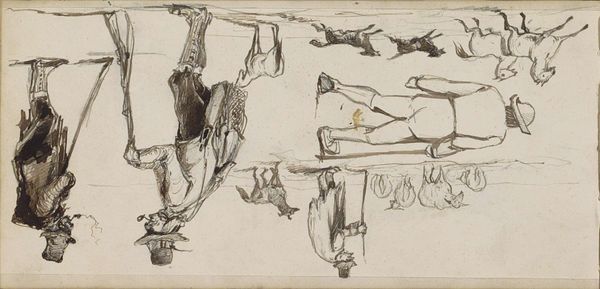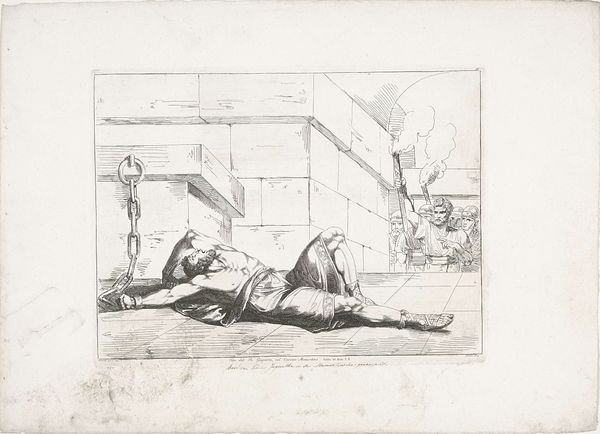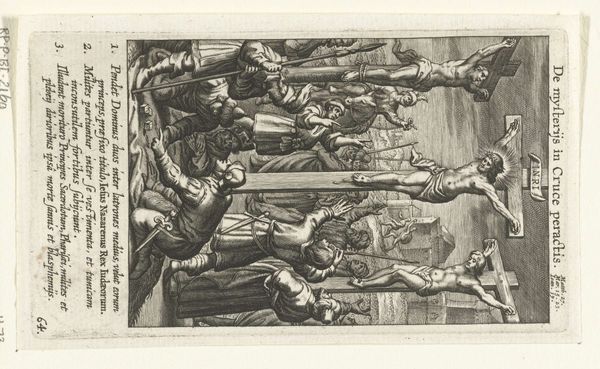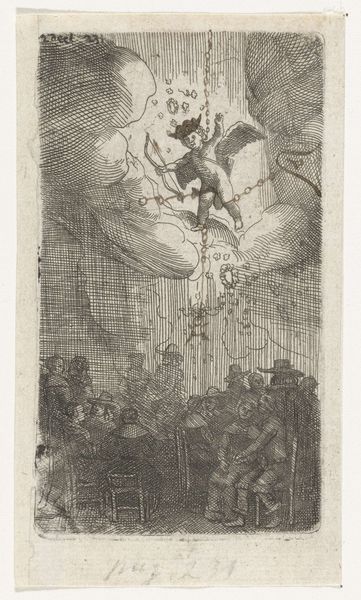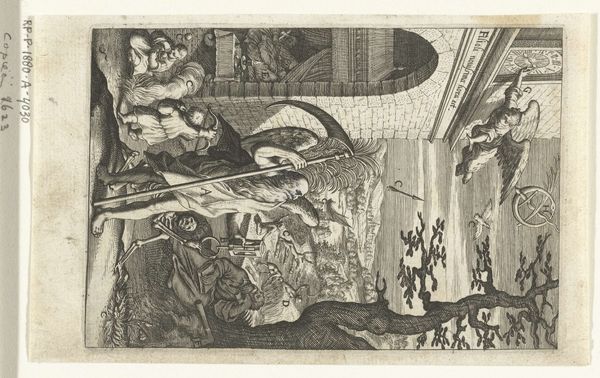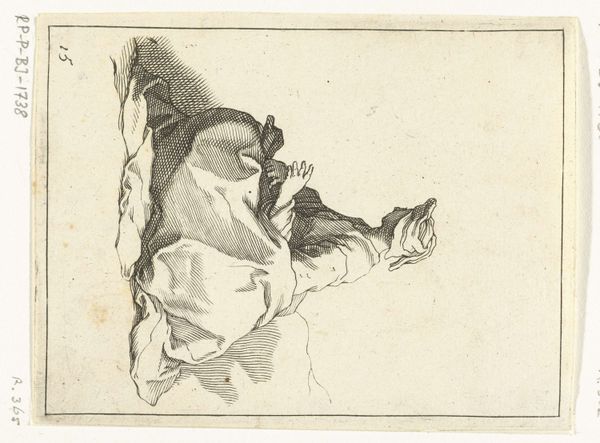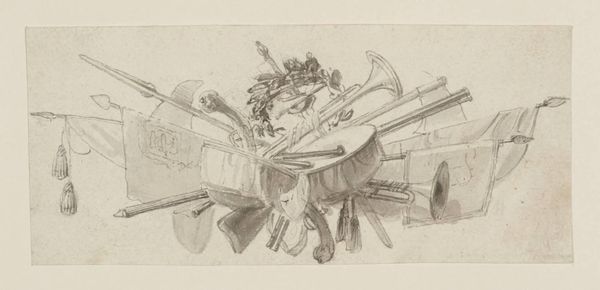
drawing, print, etching, ink, engraving
#
drawing
#
narrative-art
# print
#
etching
#
landscape
#
figuration
#
ink
#
genre-painting
#
northern-renaissance
#
engraving
Dimensions: height 111 mm, width 64 mm
Copyright: Rijks Museum: Open Domain
Curator: Immediately, what strikes me is the activity in this image; there's so much dynamism. It's bustling despite its monochrome palette. Editor: Here we have a detailed engraving, likely an etching, rendered in ink by Boëtius Adamsz. Bolswert, titled "Duyfken en Willemynken bij kerktoren met vogels." Created sometime between 1590 and 1627, it's currently housed in the Rijksmuseum. Bolswert, well-known for his printmaking, captured scenes reflecting everyday life alongside allegorical subjects, reflecting the rising popularity of genre painting during this period. Curator: It certainly portrays an almost chaotic yet strangely idyllic landscape. The textures he achieves through line variation is interesting, especially observing the cliff face on the left, the density of hatching really suggesting the roughness and solid mass. Editor: Absolutely. Note how he meticulously captured both the grounded reality—farmers and livestock plodding along—with soaring, near-abstract flock of birds circling around that somewhat austere church steeple. Considering the sociopolitical context of the Dutch Golden Age, with its emphasis on naturalism and secularization, this piece invites layered interpretation. There is a deep sense of place intermingling a nationalistic impulse along with everyday experience. Curator: Thinking about this work through a lens of material study—I'm drawn to how the layering of ink during the etching process would have determined its final appearance. Its reproducibility allowed Bolswert’s visions of rural life to be accessible. The labor involved is quite explicit—carefully etching the design into the metal, the inking and finally the printing. Each impression stands as its unique record, and must be seen in terms of a commercial exchange in 17th Century Holland. Editor: A wonderful point. And what’s compelling is considering the work’s reception in an era defined by expanding colonial ventures. Here's this seemingly quaint Dutch village co-existing with the era's exploitation of people and lands across continents, of the Dutch East India company; it reflects an ambivalence towards both provincial serenity, but also awareness about wealth generated elsewhere through systematic, if brutal, extraction. The landscape as both idyllic but constructed—the village relying on the extraction economies and global movement occurring simultaneously elsewhere, unseen within the border of this representation. Curator: It is precisely this paradox that the print holds. By showcasing this tension, between its technique and context, Bolswert's work is revealed, speaking about and engaging with the times, allowing access to broader audiences, through commercial manufacture. Editor: Yes, understanding those tensions helps unpacks those silent narratives deeply embedded within seemingly simple compositions.
Comments
No comments
Be the first to comment and join the conversation on the ultimate creative platform.
